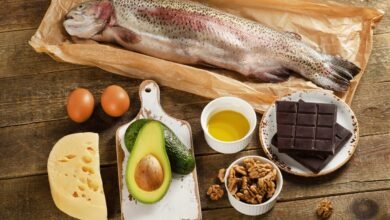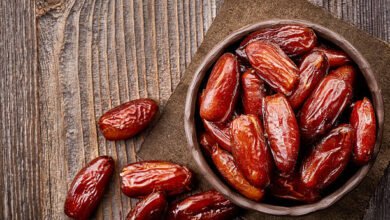The 5 Best Probiotic Foods for Gut Health

The microbes (microorganisms) that reside in your digestive system and include bacteria, viruses, and fungus make up your gut microbiome. Your body’s ability to digest food, burn calories, and control your immune system may all be impacted by your microbiome.But not all of the bacteria in your stomach are beneficial. Probiotic foods may assist in reintroducing healthy germs into your body if the ratio of good to bad bacteria in your microbiome is out of balance.
Best Probiotic Foods for Gut Health
Live microbes, or probiotics, may be taken as supplements or in meals.According to several studies, probiotics may boost the variety of bacteria in your gut microbiome and have an antioxidant-like effect that lowers inflammation in the body.
Since fermentation introduces living microbes, the majority of probiotic foods are fermented. Probiotics are not present in every fermented item, however. After fermentation, if the meal is heated (as in the case of sourdough bread and often tempeh or miso), the good microbes are destroyed. Conversely, the living microbes introduced during fermentation are preserved in yogurt.
Read More : The Incredible 9 Health Benefits of Tomatoes: A Nutrient-Packed Superfood
Probiotics as a functional food are the subject of increasing study, and novel probiotic food varieties, including probiotic and prebiotic sodas, are being created. Additionally, researchers are looking on new ways to preserve probiotics and make them resistant to heat in meals that would not normally include them.
Kefir
A fermented milk beverage called kefir has a high probiotic content. It is prepared by combining milk with lactic acid bacteria and yeast-fermented kefir grains. A culture is a technique used in laboratories to provide microorganisms with the food, water, and time they need to grow. Probiotics are a mixture of bacteria and yeast that are introduced during the fermentation process.
Kefir is a form of yogurt that is drinkable and has a tart flavour. You may eat it by yourself or mix it into smoothies. It’s often fortified with vitamin D and is an excellent source of calcium and protein.Most individuals with lactose intolerance may handle kefir because of the way it’s prepared, which often results in a relatively low lactose content.
Kimchi
Recently, kimchi, one of Korea’s most well-liked dishes, has become increasingly popular in the US as interest in probiotics has grown. It’s a condiment created by allowing veggies to ferment. It often consists of onions, cucumbers, radishes, and cabbage. One kind of probiotic, lactic acid bacteria, is particularly abundant in it. Kimchi comes in a variety of heat levels.
According to studies, fermented kimchi supports normal blood pressure, cholesterol, and glucose levels while also assisting in the reduction of potentially hazardous intestinal flora.
In addition to being high in probiotics, kimchi is also a strong source of fibre, which is another essential ingredient for gut health. In addition to maintaining normal blood sugar and cholesterol levels, fibre enhances the health advantages of kimchi.
Kombucha
A carbonated, fermented tea produced with sugar, yeast, and bacteria is called kombucha. For flavour, fruit is often added during fermentation. There is extremely little alcohol in it because throughout the fermentation process, active yeast changes the sugar.
Research has shown that kombucha has several health advantages, but additional studies are required. According to one research, certain kombucha varieties provide health benefits due to their bacteria, vitamins, and antioxidants; however, these benefits aren’t well-regulated. Individuals who are immunocompromised or pregnant should exercise caution and consult their healthcare professional before taking it.
Sauerkraut
A classic Chinese dish, sauerkraut is also well-liked across most of Europe and the US. It’s kind of like kimchi, just with cabbage instead of other vegetables. Lactic acid bacteria ferment the cabbage, acting as a probiotic. According to one research, sauerkraut is an excellent source of probiotics since it retains the majority of its good bacteria throughout fermentation and storage.
Though sauerkraut is usually associated with hot dogs, it is also a delicious addition to burgers, sandwiches, and salads. It’s also a great addition to a charcuterie platter or as a mashed potato topping.
Yogurt
Yogurt is one of the most popular foods to consume probiotics. It’s a fermented dairy product that resembles kefir. It is prepared by adding bacteria, boiling milk, and allowing it to ferment for a few hours. Take note of how the heating occurs before to the addition of the bacteria, preventing the probiotics from cooking off.
The probiotics that are included in most yogurt containers are listed so you can know which particular strains were introduced during the fermentation process. The two most prevalent species are Bifidobacterium and Lactobacillus.
Another excellent source of protein is yogurt, particularly Greek or Icelandic Skyr yogurt. Vitamin D and calcium are also present.
You may have yogurt on its own, mixed into smoothies, or combined with fruit and granola to make a parfait.
Tips for Consuming More Probiotics
Check the label of a probiotic item to make sure it includes live, active cultures if you want to make increasing your intake of probiotics a priority. To ensure that the cultures weren’t boiled off or otherwise damaged during processing, the label should mention the cultures that are present.
Probiotic foods should be stored as the manufacturer suggests. To guarantee that the bacteria survive and the product does not deteriorate, this often entails refrigerating them. Probiotics usually fade off when heated to a high temperature.
The following advice may help you eat more probiotics:
- Make your smoothies using kefir or yogurt.
- Make a mocktail using kombucha or another probiotic beverage.
- Toss kimchi or sauerkraut on burgers and sandwiches.
- Make marinades and salad sauces using Greek yogurt.
- Add some yogurt and berries to your pancakes or cereal.
Side Effects of Probiotics
According to our current study, most individuals may safely ingest probiotics, notably the most widely used Lactobacillus and Bifidobacterium species.
The majority of adverse effects, according to research, are mild gastrointestinal (GI) symptoms including flatulence. By introducing probiotics gradually, you may lessen the likelihood of unpleasant stomach symptoms and allow your body time to adapt.
Read More : Healthy Chinese Foods to Eat When You Have Diabetes
Although uncommon, probiotics may result in severe illnesses. Other strains than those on the list could be present in certain items, which might be dangerous. Those who are immunocompromised, have serious diseases, or are preterm newborns are most vulnerable to probiotic adverse effects.
Conclusion
Probiotics may improve your gut microbiome’s variety, which will benefit your immune system, digestion, and mental well-being. Because bacteria are added during the fermentation process, they may be found in fermented foods including kimchi, kombucha, kefir, yogurt, and sauerkraut.
Try include kefir or yogurt in your morning smoothie and adding kimchi or sauerkraut to your lunchtime sandwich to increase your intake of probiotics.







